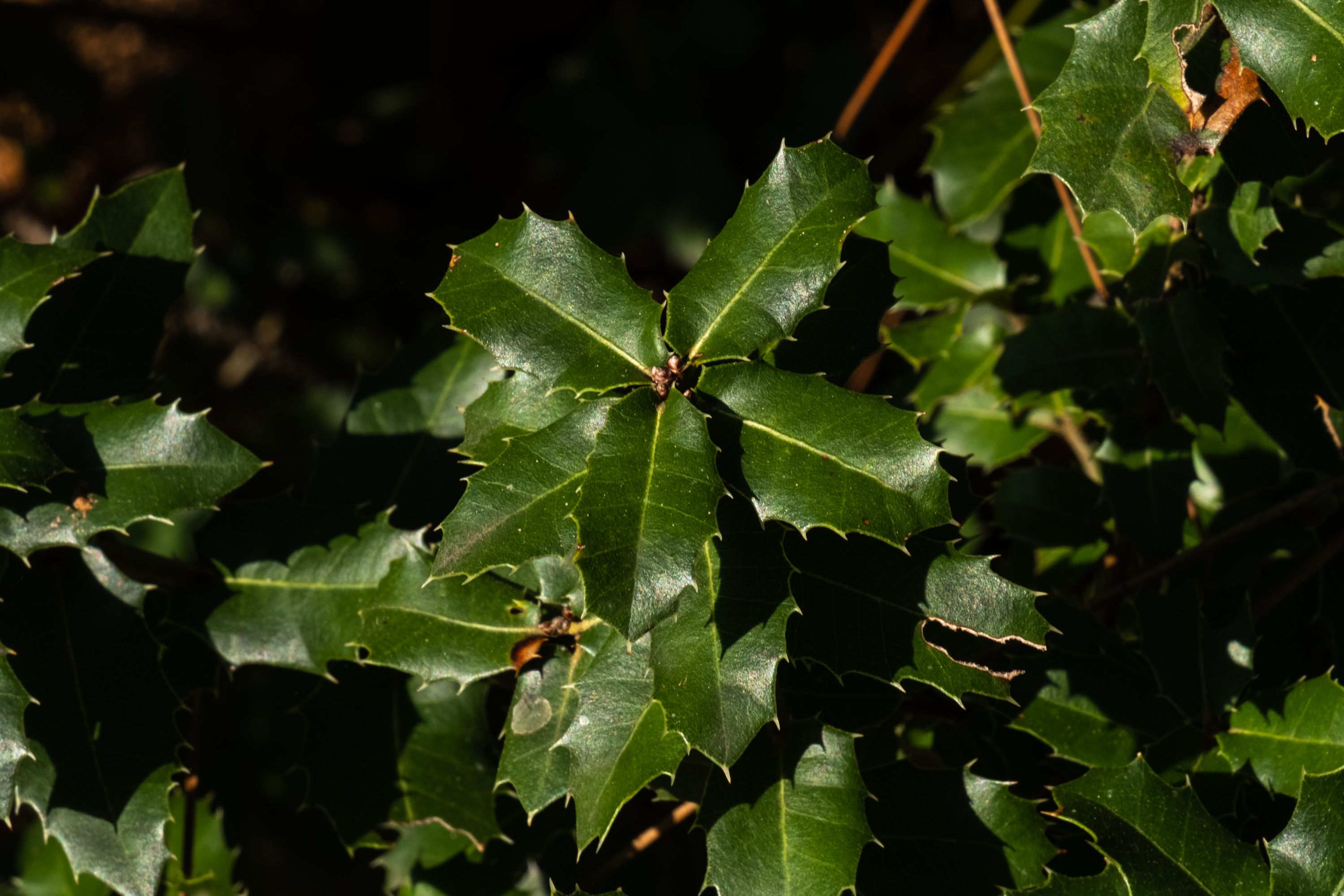Kermes oak
(Quercus coccifera)

Description
Quercus coccifera, the kermes oak, is an oak bush in the Quercus section Cerris. It is native to the Mediterranean region and Northern African Maghreb, south to north from Morocco to France and west to east from Portugal to Cyprus and Turkey, crossing Spain, Italy, Libya, Balkans, and Greece, including Crete. The Kermes Oak was historically important as the food plant of the Kermes scale insect, from which a red dye called crimson was obtained. The etymology of the specific name coccifera is related to the production of red cochineal (crimson) dye and derived from Latin coccum which was from Greek κόκκος, the kermes insect. The Latin -fera means 'bearer'. Quercus coccifera is usually a shrub less than 2 metres (6.6 ft) high, rarely a small tree, reaching 1–6 metres (3.3–19.7 ft) tall (a 10 metres (33 ft) specimen recorded in Kouf, Libya) and 50 cm trunk diameter. It is evergreen, with spiny-serrated coriaceous leaves 1.5–4 cm long and 1–3 cm broad. The acorns are 2–3 cm long and 1.5–2 cm diameter when mature about 18 months after pollination. They are held in a cup covered in dense, elongated, reflexed scales. It can survive heavy sheep and goat grazing for a long time as a ground carpet a few centimeters high, and will grow higher as a bush or a tree according to how much the grazing pressure is slackened. The kermes oak is a scrub oak closely related to the Palestine oak (Quercus calliprinos) of the eastern Mediterranean, with some botanists including the latter in kermes oak as a subspecies or variety. The Palestine oak is distinguished from it by its larger size (more often a tree, up to 18 m) and larger acorns over 2 cm diameter. It is associated with several asparagus species, Crataegus monogyna, Mediterranean dwarf palm, ephedra, myrtle, several species of Junipers (Juniperus, sabinas...), Pistacia terebinthus, mastic, wild Olea europea, sarsaparilla, Rhamnus atlantica, Rhamnus lycioides, Rhamnus oleoides, Rhamnus catharticus etc. The communities receiving several characteristic names. It is indifferent to chemistry of soils, living on calcareous, pebbly, stony and poor soils. A lover of warm weather, it starts to fail from 1000 metres above sea level. It is capable of supporting the continental Mediterranean climate with extreme temperatures and low rainfall, replacing Quercus ilex (holm oak) in drier areas where it excels in drought resistance.
Taxonomic tree:







